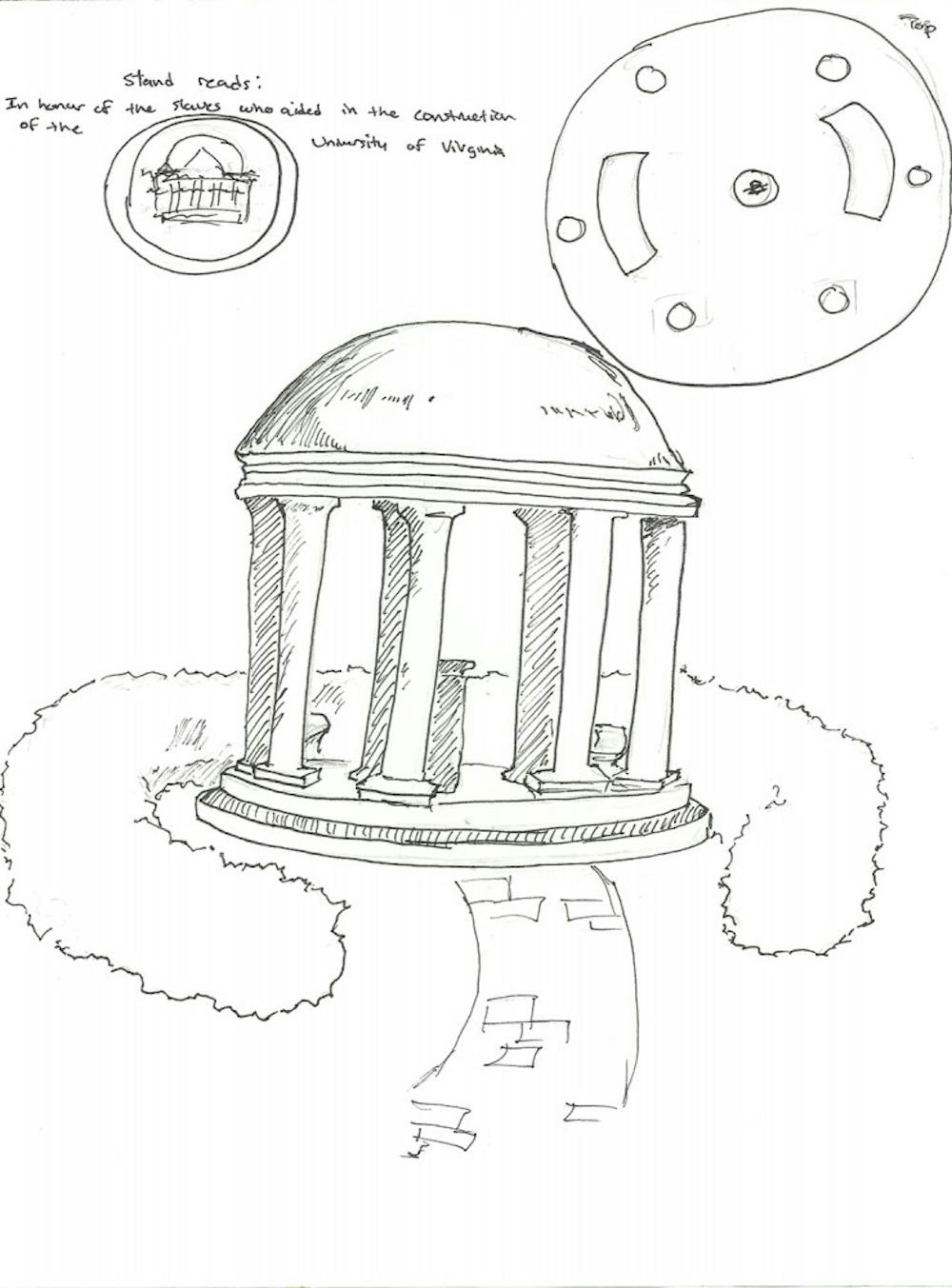Plans to build a memorial commemorating the contributions of enslaved workers who built the University are moving forward after the Board of Visitors Buildings and Grounds Committee selected a firm to design the memorial at its September meeting.
“The selected team will conduct extensive engagement with U.Va. community and Charlottesville community to solicit ideas for the memorial’s form and location,” University Architect Alice Raucher said in an email statement. “Then [they] will draft some concepts to present for further dialogue before settling on specific design ideas.”
A joint selection committee comprised of the President’s Commission on Slavery at the University and the Office of the Architect recommended Boston-based Howeler and Yoon from a group of 15 firms that submitted letters of interest.
The memorial will be part of a series of efforts to recognize the contributions of enslaved people in the University’s history.
Following the 2007 General Assembly resolution of apology for Virginia’s role in slavery, the University’s Board of Visitors issued its own mirroring that of the state. Further, the Board approved the installation of a slate plaque residing under the south terrace of the Rotunda to commemorate free and enslaved laborers.
Kirt von Daacke, co-chair of the President’s Commission on Slavery and the University, said the idea of something more substantial than a plaque, however, started with the students themselves.
“That was part of the reason President Sullivan ultimately put together the commission in 2013,” von Daacke said. “One of our tasks was to consider appropriate memorialization.”
Araba Dennis, chair of the Student Council diversity engagement committee and third-year College student, said a memorial is important because much of Jefferson’s architecture was designed around keeping slaves at the University.
“We are able to go to school on such a beautiful campus because enslaved laborers built it for us, and we owe it to them as students to honor them,” Dennis said in an email statement.
Diana Wilson, third-year College student and chair of the Memorialization for Enslaved Laborers, said her organization aims to educate the student body about the University’s early past — namely its reliance on the institution of slavery — and how this history has colored the University’s past, present and future.
“[The memorial] is so pertinent because it serves as a physical reminder that black lives matter and the injustices that the black community incurred in slavery and its ripple effect to today's injustices are being commemorated,” Wilson said.
In 2011 a competition took place for memorial design concepts. The competition was sponsored by MEL, in conjunction with Student Council, the Black Student Alliance and University and Community Action for Racial Equality.
Following the partnership’s continued efforts, the Office of the Vice President and Chief Officer for Diversity and Equity helped to form the President’s Commission on Slavery and the University.
“I think this memorial will bring awareness to students who are unaware or ignorant of U.Va.’s and Thomas Jefferson's complicated history. Additionally, and more importantly, it will honor those who literally gave their lives to give us the school we go to today,” Dennis said. “There is such a horrible cognitive dissonance that exists with U.Va. students where we don't have discussions about the legacy of African-Americans at this school, yet we walk on the bricks they hand made every single day.”
The commission will begin working on broad community engagement with faculty, staff and members of the Charlottesville community about what the memorial means to them, what it should look like and possible locations, von Daacke said.
One possible location for the memorial includes where the Berlin Wall exhibit currently stands, which was the original site of anatomical dissection of enslaved people, von Daacke said. Another candidate is the space between Pavilion 10 and the Washington statue. Because this location is neither connected to a garden or Lawn, it does not run into regulations involving the use of a UNESCO World Heritage site.
Although the commission gave location ideas to design consultants, von Daacke said the consultant is not limited by any means and are free to think more broadly. The commission intentionally did not designate a spot prior to having a dialogue.
“Once built, the memorial should invite the entire U.Va. community to reflect on this history and its legacy going forward,” Raucher said.
The goal of the memorial is to fully acknowledge the University’s debt to the lives and labor of the enslaved laborers who build the University.
“To fully do it justice we must acknowledge them in really powerful ways,” von Daacke said. “The way you signal your commitment to acknowledgement is finding ways to inscribe the history and lives of the enslaved back into the landscape.”
The acts of the commission — from naming Gibbons dorm, to creating an African-Americans at U.Va. walking tour map, to restoring the African American cemetery — should be looked at as part of a much larger process of acknowledgement, von Daacke said.
“[We want to] make sure slavery is woven into the story we tell about the history of the Rotunda, University and original Academical Village,” von Daacke said. “We’re not just talking about labor or bricks, we’re talking about hundreds of people who lived and worked here. This is a human story.”
Raucher said the anticipated completion date for conceptual design is June 2017 and will be followed by fundraising efforts before working drawings and implementation can be completed.







